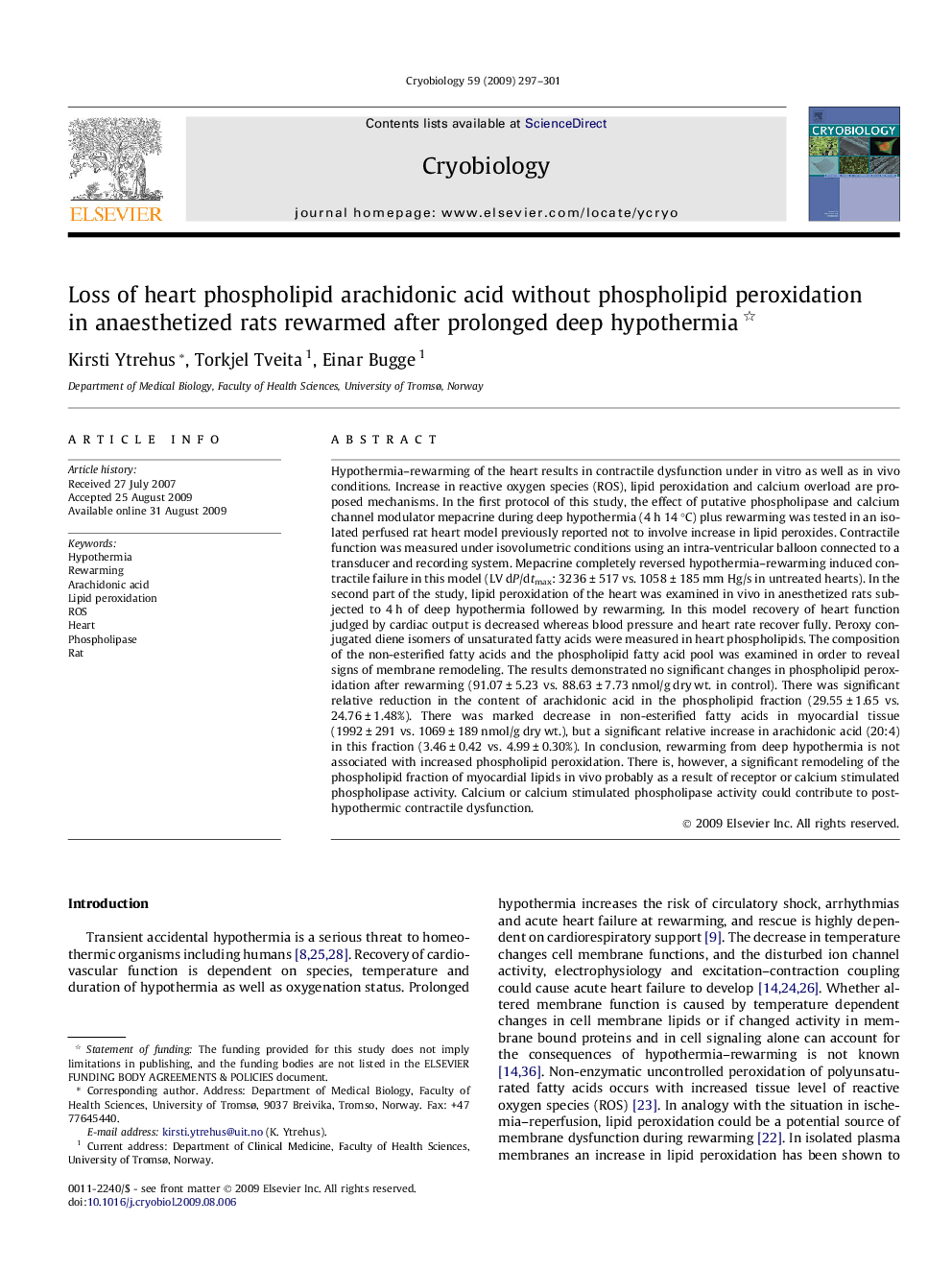| کد مقاله | کد نشریه | سال انتشار | مقاله انگلیسی | نسخه تمام متن |
|---|---|---|---|---|
| 2169018 | 1092923 | 2009 | 5 صفحه PDF | دانلود رایگان |
عنوان انگلیسی مقاله ISI
Loss of heart phospholipid arachidonic acid without phospholipid peroxidation in anaesthetized rats rewarmed after prolonged deep hypothermia
دانلود مقاله + سفارش ترجمه
دانلود مقاله ISI انگلیسی
رایگان برای ایرانیان
کلمات کلیدی
موضوعات مرتبط
علوم زیستی و بیوفناوری
علوم کشاورزی و بیولوژیک
علوم کشاورزی و بیولوژیک (عمومی)
پیش نمایش صفحه اول مقاله

چکیده انگلیسی
Hypothermia-rewarming of the heart results in contractile dysfunction under in vitro as well as in vivo conditions. Increase in reactive oxygen species (ROS), lipid peroxidation and calcium overload are proposed mechanisms. In the first protocol of this study, the effect of putative phospholipase and calcium channel modulator mepacrine during deep hypothermia (4 h 14 °C) plus rewarming was tested in an isolated perfused rat heart model previously reported not to involve increase in lipid peroxides. Contractile function was measured under isovolumetric conditions using an intra-ventricular balloon connected to a transducer and recording system. Mepacrine completely reversed hypothermia-rewarming induced contractile failure in this model (LV dP/dtmax: 3236 ± 517 vs. 1058 ± 185 mm Hg/s in untreated hearts). In the second part of the study, lipid peroxidation of the heart was examined in vivo in anesthetized rats subjected to 4 h of deep hypothermia followed by rewarming. In this model recovery of heart function judged by cardiac output is decreased whereas blood pressure and heart rate recover fully. Peroxy conjugated diene isomers of unsaturated fatty acids were measured in heart phospholipids. The composition of the non-esterified fatty acids and the phospholipid fatty acid pool was examined in order to reveal signs of membrane remodeling. The results demonstrated no significant changes in phospholipid peroxidation after rewarming (91.07 ± 5.23 vs. 88.63 ± 7.73 nmol/g dry wt. in control). There was significant relative reduction in the content of arachidonic acid in the phospholipid fraction (29.55 ± 1.65 vs. 24.76 ± 1.48%). There was marked decrease in non-esterified fatty acids in myocardial tissue (1992 ± 291 vs. 1069 ± 189 nmol/g dry wt.), but a significant relative increase in arachidonic acid (20:4) in this fraction (3.46 ± 0.42 vs. 4.99 ± 0.30%). In conclusion, rewarming from deep hypothermia is not associated with increased phospholipid peroxidation. There is, however, a significant remodeling of the phospholipid fraction of myocardial lipids in vivo probably as a result of receptor or calcium stimulated phospholipase activity. Calcium or calcium stimulated phospholipase activity could contribute to posthypothermic contractile dysfunction.
ناشر
Database: Elsevier - ScienceDirect (ساینس دایرکت)
Journal: Cryobiology - Volume 59, Issue 3, December 2009, Pages 297-301
Journal: Cryobiology - Volume 59, Issue 3, December 2009, Pages 297-301
نویسندگان
Kirsti Ytrehus, Torkjel Tveita, Einar Bugge,